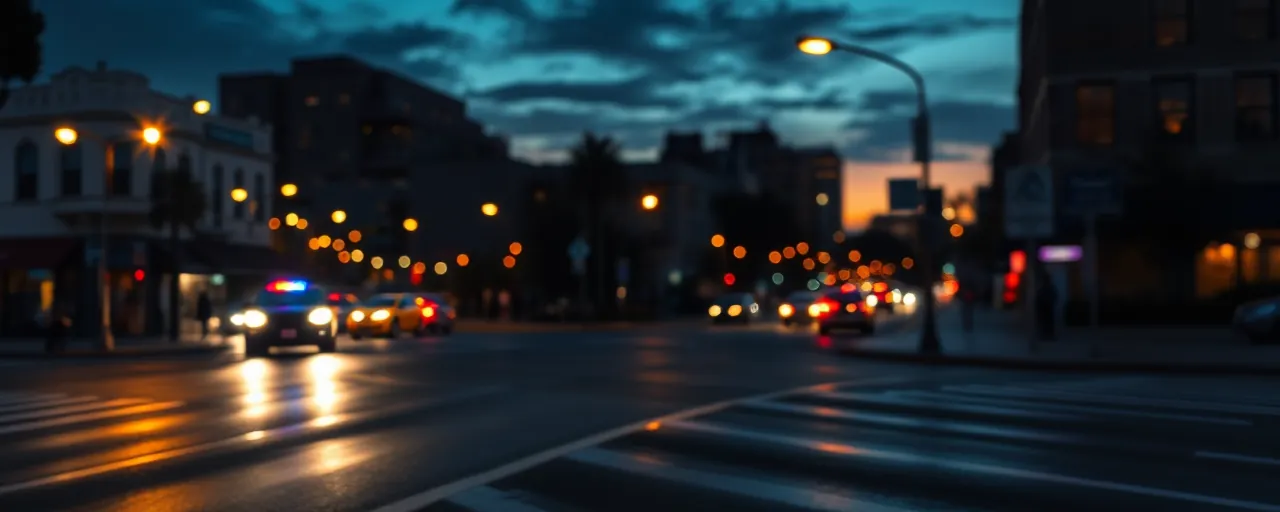A Glimmer of Progress, But Shadows Remain
California’s latest crime numbers hit like a rare bit of good news. Preliminary data from 2024 shows violent crime down 4.6% and property crime off by 8.5% compared to the year before. Robberies, assaults, even vehicle thefts, all trending downward. It’s the kind of report card that Sacramento loves to wave around, proof their $1.1 billion safety push since 2019 isn’t just hot air. But dig deeper, and the story’s not so tidy. Families and businesses aren’t throwing parades yet, and for good reason.
The state’s been pouring money into police hiring and task forces, crowing about thousands of arrests and millions in recovered goods. Sounds impressive, until you realize crime’s still a daily grind for too many. Shop owners board up windows, and drivers double-check their locks. Sure, the numbers are down, but when your neighbor’s car gets swiped, those stats feel like cold comfort. The question isn’t whether things are better. It’s whether they’re good enough.
Sacramento’s big on promises, with Governor Newsom touting his shiny new laws to hammer retail thieves and smash-and-grab crews. Last year’s bipartisan bills were sold as a game-changer, letting prosecutors stack charges and chase felonies harder. But let’s not kid ourselves. Laws don’t stop crime; enforcement does. And on that front, California’s got a long way to go before Main Street feels safe again.
Task Forces and Tough Laws: The Real Deal?
Take the Organized Retail Crime Task Force, a crown jewel in the state’s crime-fighting arsenal. Since 2019, it’s racked up over 4,000 arrests and clawed back $54 million in stolen merchandise. In 2024 alone, they nabbed 1,707 suspects and recovered 676,227 pilfered items. Numbers like that make headlines, and they should. But here’s the catch: retail theft’s still a plague. National losses topped $121 billion last year, and 76% of store security managers say their teams face violence. California’s task force is a start, but it’s like bailing out a sinking ship with a bucket.
Then there’s the new legislation, signed with much fanfare in August 2024. These laws let prosecutors lump together stolen goods from multiple heists to hit felony thresholds, a nod to common sense. California’s $950 felony cutoff is already tougher than Texas at $2,500 or Alabama at $1,500, yet thieves keep at it. Why? Because the risk of getting caught, let alone locked up, feels like a bad joke to career criminals. The state’s patting itself on the back for tougher penalties, but without boots on the ground to make arrests stick, it’s just paper.
Compare that to what’s working elsewhere. Pennsylvania’s Violence Intervention Grants slashed gun violence by 42% since 2022, with Philly hitting a decade-low homicide rate. Their secret? Targeted funding, not just flashy arrests. California’s $267 million to 55 communities for retail crime sounds big, but spread thin, it’s barely a dent. Throwing cash at the problem won’t cut it if the system’s still soft on repeat offenders.
Vehicle Theft: A Win, But Not a Triumph
Vehicle theft’s another sore spot, though 2024 brought some relief. California saw an 11.9% drop, part of a national 17% plunge, the biggest in 40 years. The Highway Patrol’s surge in Oakland alone recovered 600 stolen cars and nabbed nearly 400 suspects in early 2025. High-tech cameras and cross-county teamwork helped, no question. But don’t pop the champagne. The District of Columbia’s still a theft hotspot despite an 18% dip, and California’s urban centers aren’t far behind. One good year doesn’t erase decades of lax enforcement.
Historical missteps haunt the state’s progress. Back in 2014, Proposition 47 turned some thefts into misdemeanors, and auto thefts crept up when criminals sniffed out the lower stakes. It’s no coincidence that beefing up patrols and penalties is finally bending the curve. But families deserve more than a pat on the head for dodging a break-in. Real security means thieves think twice before touching your car, not just better odds of getting it back.
The Other Side’s Take, and Why It Falls Flat
Some argue California’s crime fight is already a roaring success. They point to the stats, the task force hauls, the billion-plus in funding. They’ll say the state’s near historic crime lows, so why complain? It’s a rosy view, but it ignores the grit of reality. Lower numbers don’t mean safe streets when businesses shutter and families bolt for the suburbs. Painting a pretty picture while crime’s still a daily headache is like celebrating a half-built house.
Others push for softer approaches, more treatment programs, less jail time. They lean on Proposition 47’s legacy, claiming it eased prison crowding without spiking crime. But evidence tells a different story. Property crimes ticked up post-47, and while violent crime’s stable, that’s no thanks to lighter sentences. New Mexico’s blending enforcement with behavioral health funding, but even they’re not betting the farm on therapy alone. Holding criminals accountable isn’t cruelty; it’s clarity.
Time to Double Down
California’s on the right track, but it’s no time to ease up. The 2024 numbers prove tough laws and task forces can move the needle, but half-measures won’t cut it. Every recovered car, every arrested thief, is a win for the law-abiding. Yet the job’s not done until shopkeepers can unlock their doors without fear and parents don’t dread a late-night call about their kid’s car. That takes more than money or headlines. It takes a system that says crime has consequences, every time.
The state’s got the tools, now it needs the will. Keep funding targeted patrols, not bloated programs. Lock in penalties that sting, not just sound tough. And don’t let up on the thieves and gangs who think California’s an open buffet. The people deserve a state where safety isn’t a statistic, but a fact of life.
